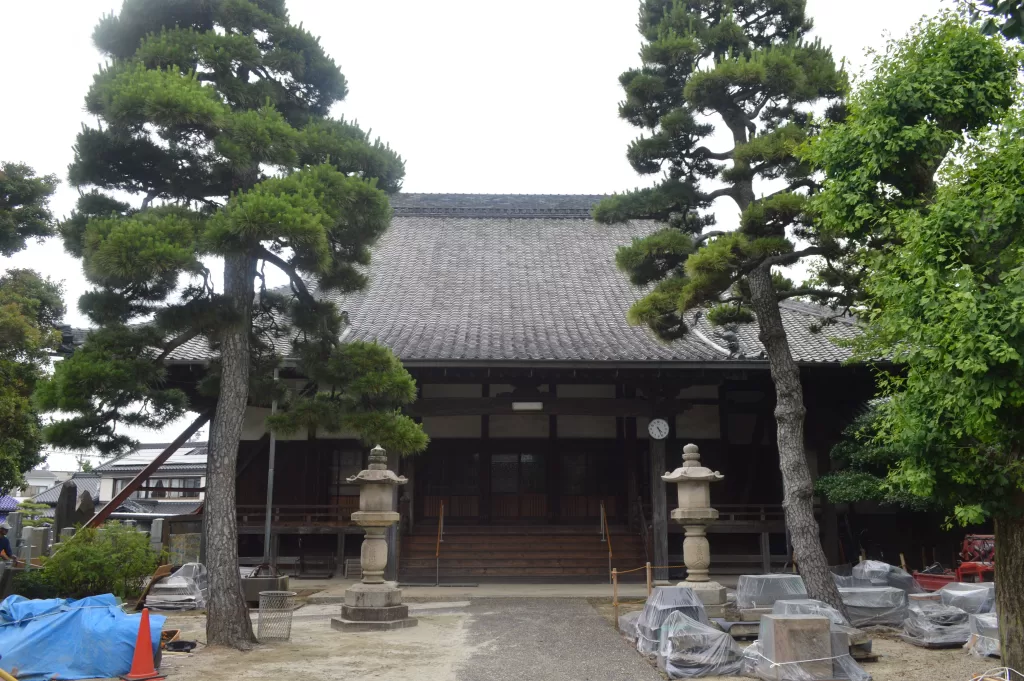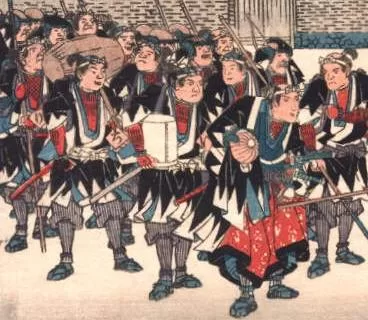Gishi-e Hōyō: A Time-Honored Event in Honor of the 47 Rōnin in Kyoto’s Hōjū-ji Temple

The Tale of the 47 Rōnin and its Connection to Hōjū-ji Temple
Each year on December 14th, the serene ambiance of Hōjū-ji Temple in Kyoto takes on a poignant note as it hosts the annual Gishi-e Hōyō ceremony. This time-honored festival is an integral part of Japan’s cultural heritage, commemorating the tale of the 47 Rōnin – a narrative that recounts the valor and principles of samurai honor and loyalty.
While this historic incident played out in the early 18th century, it continues to resonate through the centuries due to its embodiment of Bushido — the Samurai code of honor. The story revolves around forty-seven retainers who were left masterless when their lord, Asano Naganori, was forced to commit ritual suicide following a conflict with another lord, Kira Yoshinaka.
Their leader, Ōishi Kuranosuke took up residence in Kyoto’s teahouses, presenting an image of one who had lost his honor while secretly planning their master’s revenge against Kira. Many believe, during this period, he often made covert visits to Hōjū-ji Temple, deepening its connection to this historic tale.

The Gishi-e Hōyō Ceremony: Commemorating Valor and Loyalty
The Gishi-e Hōyō ceremony at Hōjū-ji temple begins with a traditional tayū dōchū procession. A tayū, historically a high-ranking courtesan from Japan’s Edo period, leads the procession into the main hall of Hōjū-jito mark the commencement of the day’s festivities. It’s definitely one of the most fascinating Kyoto events in December.
Following this grand entry is a solemn memorial service conducted by the temple’s head priest in honor of Kuranosuke and his band of 47 loyal samurais.
After the completion of religious rites, attendees witness and participate in other celebrations combining worship and traditional Japanese culture.
Tea Traditions and Culinary Connections
One noteworthy feature is the tea offering ceremony performed by both the head priest and woman impersonating a tayū. This act symbolizes respect, commitment, and homage to those who exemplified Bushido while serving their fallen lord.
Following these offerings is an elaborate tea ceremony orchestrated by a maiko or apprentice geisha and tayū. With every sip of tea savored by visitors under expert guidance, echoes of history reverberate through Hōjū-ji’s main hall.
Adding a flavorful touch to these activities is also culinary traditions incorporating distinctly Japanese elements. Visitors get to relish a bowlful of “night raid” soba noodles – food that metaphorically traces back to that fateful day when Kuranosuke led his men on their carefully planned attack under cover of darkness.
Through these unique traditions emerging from centuries-old narratives mingling with tea ceremonies and culminating in artisanal gastronomy experiences, The Gishi-e Hōyō event serves as an evocative link between present-day Japan and its illustrious past – reminding its visitors about values such as honor, loyalty, dedication exemplifying Bushido – all heightening the enchanting allure Kyoto’s ancient temple – The HŌJŪ-JI Temple provides.
If you want to delve into the captivating world of Kyoto’s culinary heritage, don’t miss the Kyō-ryōri Exhibition held on December 13th and 14th. This annual event showcases the sumptuous and elaborate dishes crafted by the city’s most acclaimed restaurants, providing a tantalizing glimpse into the unique style of cuisine known as Kyō-ryōri.